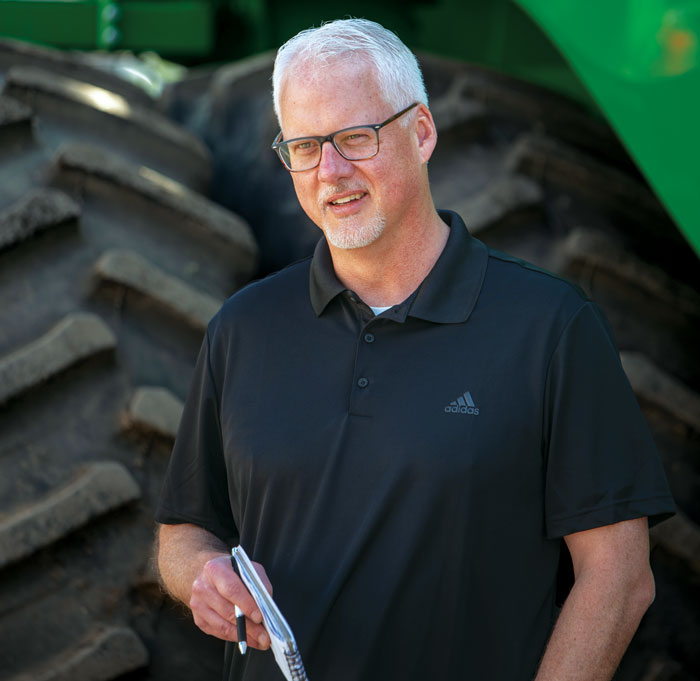Even after the benefits of no-till were well known in the 1970-80s, few equipment choices existed, notes Canada’s C. Wayne Lindwall, co-author of Landscapes Transformed: The History of Conservation Tillage and Direct Seeding.
“Development of appropriate seeding equipment was slow because the large, mainline equipment manufacturers had a vested interest in conventional tillage equipment and saw limited market potential for no-till systems.”
With fortunes invested in factories and distribution designed around heavy horsepower tractors, plows, cultivators and discs, the majors weren’t exactly sprinting to embrace a practice that would eliminate the need for heavy steel. Their reaction was the same reason the railways didn’t invest in air transportation, why Kodak turned its back on the digital camera and why Blockbuster Video didn’t bother with mail rentals or streaming.
So, it would be up to the independents to create solutions for residue management, seeding, fertilizer placement, spraying and harvesting needed for the upstart practice. “Innovative producers and a few shortline equipment manufacturers working with government and university researchers were the early pioneers in equipment development,” says Lindwall, a statement that also holds true for the U.S.
The Shortline Story
Lindwall’s 2010 book (with co-author Bernie Sontagg) on Canadian no-tillage tells the shortline story as well as it can be told. The Canadian prairies are well-positioned to tell the story, considering the near-total adoption of no-till in the region.
The authors devote a fair amount on Canada’s shortline equipment industry. The book quotes Bob McNabb, of Minnedosa, Manitoba, a No-Till Farmer Legend who understood the mainstream manufacturers’ distaste with no-till in those years.
“No-till threatened the lucrative equipment market for conventional tillage. The hesitation by mainline companies, however, provided an opportunity for small manufacturers to come up with designs and develop significant businesses.”
The book also conveys the arm’s length distance the major-lines wanted to keep from the no-till practice. The first no-till production manual by the Manitoba-North Dakota Zero-Tillage Farmers Association featured a photo from McNabb’s farm of two combines harvesting no-till barley. In seeking funding for a second printing, ManDak approached John Deere to see if it would help since its machinery was on the cover. The request was rejected, so ManDak acquiesced and covered up the combine with another image.
“With the relatively small market and limited demand for no-till drills, only a few small or shortline manufacturers were interested in developing suitable equipment,” said Alberta farmer Ike Lanier.
Lanier recalled his concerns for early no-till farmers making big early investments in the expensive Yielder Pioneer no-till drills ($250,000-plus) from Washington state.
“But the apparent acceptance of these expensive drills provided an incentive for some prairie manufacturers to begin development of more suitable and cost-effective seeding equipment. Haybuster was finally getting some competition from FlexiCoil, Bourgault, New Noble and ConservaPak.”
“While Allis-Chalmers embraced no-till by the late 1960s, the major equipment manufacturers — Case, International Harvester, John Deere, New Holland, Massey Ferguson and Ford — bad-mouthed the practice for years…”
– Frank Lessiter in From Maverick to Mainstream:
A History of No-Till Farming
Wake Up Call
Dr. John Bradley (retired from University of Tenn.’s Milan Research Station and later, Monsanto) recalls his speech to an equipment manufacturers association in Nashville in the early 1980s. He dropped a bomb on a crowded ballroom. “I had said that by the year 2000, 90% of farming would be in conservation or no-tillage,” Bradley recalls.
“It really upset a lot of people. I had manufacturers of plow points claim I was trying to put them out of business. I said, ‘No, but you’re going to have to change your business.’ The Yetter people from Illinois were there and that’s what they did. They changed what they did and how they did business. A lot of those guys did go out of business though, because they wouldn’t change.”
Bradley wasn’t any more popular with implement dealers. The Deere dealers in a 150-mile radius of Milan complained of woefully deficient equipment sales for a spell.
“One dealer told a friend of mine that ‘John Bradley is going to put me out of business.’ Dealers who’d been ordering the same number of cultivators year after year suddenly had no orders.
“They didn’t understand that they could sell more no-till planters with attachments and more drills and sprayers. Eventually, the same dealer told me that he was enjoying his best business ever; he just couldn’t understand the change at the time.”
Enter the Entrepreneurs
Practices like no-till and strip-till don’t allow the one-size-fits-all designs that the majors prefer for mass-production. So while the majors sat out, a cottage industry of entrepreneurs arrived with solutions.
In addition to the companies cited above, other independent manufacturers included Martin, Kinze, Tye, DMI, Great Plains, Crustbuster, Hi-Pro, Schaffert, Melroe, Needham Ag, Cross-Slot, Exapta, Fleischer, Seed Hawk, SeedMaster and Calmer Corn Heads.
A From Maverick to Mainstream: A History of No-Till Farming chapter includes personal recollections from several.
"Most of the bigger machinery companies in the 1970s and ‘80s looked at no-till as a gimmick, something they hoped would go away so they could continue to sell high horsepower tractors, cultivators, discs and other heavy-duty tillage tools.”
— Norbert Beaujot, founder of Saskatchewan-based manufacturers Seed Hawk, SeedMaster and DOT.
Many farmers, like Saskatchewan’s Lucien Lepage, cite the development of equipment by multiple independent manufacturers as the greatest contributor to the widespread adoption of no-till.
“Even today, almost every piece of equipment that leaves the factories is not set up to plant in heavy no-till conditions,” says Phil Needham of Kentucky-based Needham Ag Technology.
Suffice it to say, shortlines will play a key role for years to come.
The 2024 No-Till History Series is supported by Calmer Corn Heads. For more historical content, including video and multimedia, visit No-TillFarmer.com/HistorySeries.







